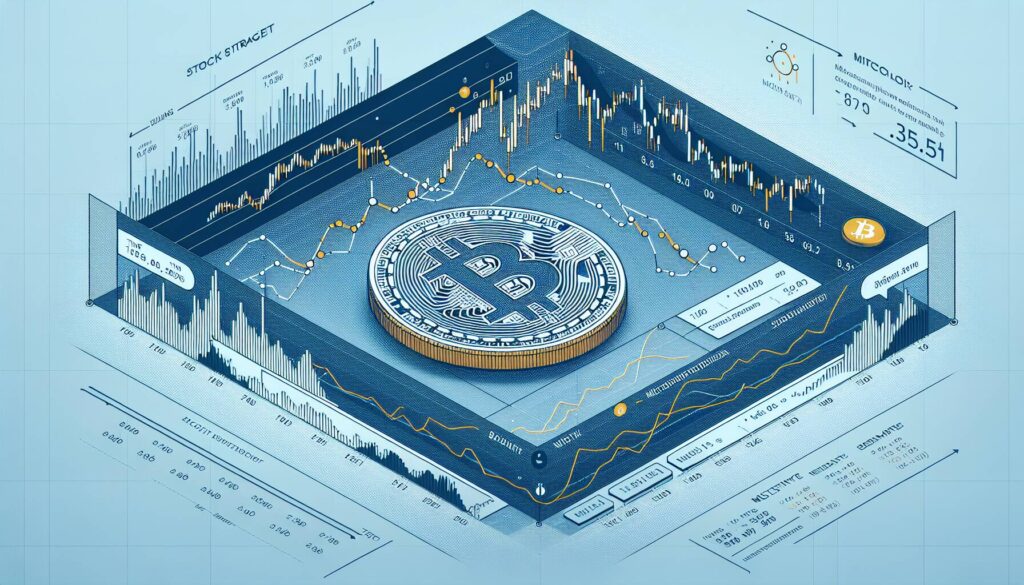Investor sentiment is shifting in response to changing economic indicators, particularly regarding the Federal Reserve’s monetary policy. Recent analysis suggests that the odds of a rate cut by the Federal Reserve in December have dipped to around 52%. This shift highlights a growing wave of uncertainty among investors, as many grapple with the implications of potential interest rate changes on various asset classes, including cryptocurrencies.
The fluctuating probabilities of a rate adjustment come amidst ongoing discussions about inflation, economic recovery, and employment trends. A decrease in the likelihood of a rate cut typically signals that the Federal Reserve may prioritize stabilizing the economy over stimulating growth, fostering a cautious attitude among market participants.
As the landscape becomes increasingly dynamic, investors are left to navigate through mixed signals and varying predictions, particularly in the volatile world of cryptocurrencies.
With the cryptocurrency market closely linked to broader economic policies, any hint of tightening monetary measures can send ripples through digital asset valuations. Investors are keeping a watchful eye on upcoming economic reports, which will likely influence the Fed’s decisions and, in turn, the trajectory of cryptocurrency markets.

Impact of Federal Reserve Rate Cut Uncertainty
The recent shift in the likelihood of a Federal Reserve rate cut has significant implications for investors and the economy. Below are the key points regarding this development:
- Current Odds of Rate Cut: The probability of a Federal Reserve rate cut in December has decreased to approximately 52%.
- Investor Sentiment: Increased uncertainty among investors may lead to volatility in the stock market.
- Impact on Borrowing Costs: Decisions regarding rate cuts can influence borrowing costs for consumers and businesses.
- Economic Forecasts: Lower expectations for cuts may suggest a more stable economic outlook, but also higher interest rates.
- Impact on Savings and Investments: Changes in interest rates directly affect savings account yields and investment returns.
This uncertainty could influence personal financial decisions, such as mortgages, loans, and investments, making individuals reconsider their financial strategies.
Analyzing the Decline in Federal Reserve Rate Cut Odds Amidst Investor Uncertainty
The recent news that the chances of a Federal Reserve rate cut in December have dropped to approximately 52% highlights a notable shift in the financial landscape. This reduction in odds reflects rising investor uncertainty, contrasting with earlier expectations where a cut seemed more likely. This scenario brings its own set of competitive advantages and disadvantages within the market.
Advantages: For those favoring a stable interest rate environment, this news may bring reassurance. Financial institutions and conservative investors might find solace in maintaining current rates, as it suggests a commitment to a more cautious approach by the Fed. Stability in borrowing costs can be attractive for businesses planning investments, as well as for consumers considering large purchases that are sensitive to interest rates, like homes and cars.
Disadvantages: Conversely, this development could create complications for sectors that thrive on lower interest rates, such as real estate and technology stocks. Investors hoping for a rate cut to stimulate economic growth may feel disheartened, leading to potential market volatility. Additionally, individuals with floating-rate debts may encounter higher costs, which could strain personal budgets and influence spending habits.
Target Beneficiaries and Challenges: This situation particularly benefits traditional banks and financial services focused on consumer loans due to maintained lending rates. In contrast, it poses challenges for high-growth companies and emerging startups that rely on cheap capital for expansion. Consequently, while some will navigate these waters with ease, others may find obstacles that could impact their growth trajectories. Understanding these dynamics will be crucial for investors as they strategize in this shifting economic environment.















